Antioxidants
Antioxidants have received a lot of attention in recent years, in relation to wellness and disease prevention. More studies are needed to better understand how antioxidants (Best Antioxidant for Diabetes) may affect diabetes management and treatment.
Several vitamins and minerals are classified as antioxidants. An antioxidant is a substance that reduces cellular damage. Our bodies produce some antioxidants naturally. Certain foods are also good sources of antioxidants. It’s well accepted that eating foods rich in antioxidants is a healthful thing to do. The jury is split on whether or not to use vitamin supplements to further boost antioxidant intake. Some studies show benefit from supplementing with antioxidant vitamins, while other studies aren’t so conclusive.
Oxidation is a process by which damage occurs as a result of contact with oxygen. Oxidation of iron results in rust, as illustrated by a nail that’s exposed to air. Food spoilage happens, in part, because of exposure to oxygen in the air. Even though oxygen is essential to humans, we aren’t exempt from oxidative damage. We won’t rust or spoil; the damage is more discreet. Oxidation leads to the formation of “free-radicals.” Free radicals form from normal cellular processes. Environmental hazards can increase free radical production. Exposure to the sun’s damaging rays, car exhaust, ozone, cigarette smoke, drugs, poisons, and pesticides can all amplify free radical production. (It’s not enough to take care of ourselves; we must take care of our environment!)
Free radicals are unstable molecules that can damage cells and tissues and can interfere with the immune system. Free radicals are also implicated in heart disease because they favor plaque formation in the arteries, which can lead to atherosclerosis. Free radicals are partially to blame for cataract formation, arthritis, and even the effects of aging.
An antioxidant is a substance that prevents oxidative damage caused by free radicals. Antioxidants hold promise in preventing and treating diseases like cancer and heart disease. The benefits that antioxidants play in diabetes are still unclear and are under study. Certain nutrients have natural antioxidant qualities. Vitamin C, vitamin E, beta-carotene, and selenium all act as antioxidants to protect the body from oxidative damage. Fruits and vegetables are naturally chalk full of antioxidants. To reap the benefits, eat at least 5 servings per day from a combination of fruits and vegetables. (A serving is approximately 1 small piece, or 1/2 cup. The exchange lists can be used for portioning.) Green tea also has antioxidant activity.
Tip: Eat at least five servings per day from a combination of fruits and vegetables.
|
Vitamin C
Besides acting as an antioxidant, vitamin C has many other useful functions. Among other things, it’s important for wound healing and fighting infections. It also facilitates the absorption of iron; so if you take an iron supplement, eat a food rich in vitamin C at the same time and you’ll absorb the iron better. Vitamin C is a water-soluble vitamin. Some of the vitamin C in foods is lost when the foods are cooked. Steaming or rapid cooking in a small amount of water can help to preserve the vitamin C content of foods. Raw foods contain the maximum amount of vitamin C. When most people think of vitamin C, they think of orange juice. Sure, oranges are a great source of vitamin C, but so are many other foods. The following foods are all rich in vitamin C:
| • Bell Peppers | • Broccoli | • Brussels Sprouts |
| • Cantaloupe | • Cauliflower | • Grapefruit |
| • Greens (cabbage, spinach, collard, turnip, mustard, kale) | ||
| • Honeydew Melon | • Kiwi Fruit | • Mango |
| • Papaya | • Potato | • Strawberry |
| • Sweet Potato | • Tangerine | • Tomato |
| • Watermelon | ||
Vitamin C Requirements
Recommended Dietary Allowance (RDA) for Vitamin C (in milligrams per day)
Adult women: 75
Pregnant women: 85
Lactating women: 120
Adult men: 90
The Tolerable Upper Intake Level (UL) for all adults is set at 2,000 milligrams per day.
Caution: Supplementation with vitamin C at the upper intake levels may cause upset stomach and diarrhea.
Vitamin E “Tocopherol”
Vitamin E is a fat-soluble vitamin. This vitamin is not lost by most cooking methods, except the high heat of deep-frying. The main function of vitamin E is to serve as an antioxidant. Fruits, vegetables, and grains supply some vitamin E, but salad oils and margarine supply the most. Vitamin E deficiency is very rare.
The following foods provide vitamin E
| • Almonds | • Apricots | • Avocado |
| • Corn Oil | • Green Leafy Vegetables | • Mangos |
| • Margarine | • Mayonnaise | • Milk |
| • Peanuts | • Peas | • Salmon |
| • Safflower Oil | • Soybean Oil | • Sunflower Oil |
| • Wheat Germ |
Tip: As you probably noticed, many foods rich in vitamin E happen to be high in fat. If you’re trying to lose weight, you shouldn’t eat more fat; instead you may choose to supplement vitamin E.
Vitamin E “Tocopherol” Requirements
Recommended Dietary Allowance (RDA) for Vitamin E (in milligrams per day)
Adult women: 15
Pregnant women: 15
Lactating women: 19
Adult men: 15
The Tolerable Upper Intake Level (UL) for all adults is set at 1,000 milligrams per day.
Tip: Vitamin E is sometimes measured in international units. To convert from milligrams (mg) to international units (IU), multiply by 1.5.
For example: 15 mg = 22 IU, and 19 mg = 28 IU.
Beta-Carotene
Beta-carotene is in the class of nutrients known as carotenoids. There are more than 600 types of carotenoids. Carotenoids, abundant in fruits and vegetables, have antioxidant properties. People who consume diets that are high in fruits and vegetables appear to have less risk for developing certain diseases, including cancer, stroke, and heart disease. Although eating fruits and vegetables has been shown to have health benefits, isolating individual carotenoids and taking them in pill form has not always shown clear-cut health benefits. Supplementation study results range from positive effects to negative health outcomes. Supplementation of carotenoids is not a replacement for eating whole foods.
Beta-carotene’s other important role is that it’s converted to vitamin A in the body. Vitamin A is necessary for vision, healthy skin, fighting infections, reproduction, and normal growth and development. Beta-carotene is a fat-soluble nutrient. Cooking doesn’t destroy it. A very large intake of dietary carotenoids can produce a yellowing of the skin, as avid drinkers of carrot juice can attest!
The following fruits and vegetables are rich in beta-carotene:
| • Apricots | • Asparagus | • Broccoli |
| • Cantaloupe | • Carrots | • Mango |
| • Leafy greens (lettuce and all cooked greens) | • Peach | |
| • Pink Grapefruit | • Pumpkin | • Red Bell Peppers |
| • Sweet Potato | • Tomato | • Winter Squashes |
Beta-Carotene Requirements
No RDAs have been set for beta-carotene. Until more supplementation studies are done to prove safety, carotenoids should be obtained from a healthful intake of fruits and vegetables and not from a pill, unless under medical supervision.
Selenium
Selenium is a trace mineral. Selenium works in partnership with vitamin E to
prevent oxidative damage. The selenium content of food varies according to where it was grown, as soil and water selenium concentrations vary. Selenium deficiency in the United States is very rare.
The following foods are good sources of selenium:
| • Brazil Nuts | • Bread | • Cereal |
| • Eggs | • Fish | • Liver |
| • Meats | • Pinto beans | • Poultry |
| • Shellfish | • Soybeans | • Sunflower Seeds |
| • Tofu | • Wheat Germ | • Whole Grains |
Selenium Requirements
Recommended Dietary Allowance (RDA) for Selenium (in micrograms per day)
Adult women: 55
Pregnant women: 60
Lactating women: 70
Adult men: 55
The Tolerable Upper Intake Level (UL) for all adults is set at 400 micrograms per day.Final Tip:
If you aren’t sure whether you should take a vitamin or mineral supplement, you may want to contact a registered dietitian. A registered dietitian can evaluate your diet and your medical history to determine if a supplement could be beneficial.





